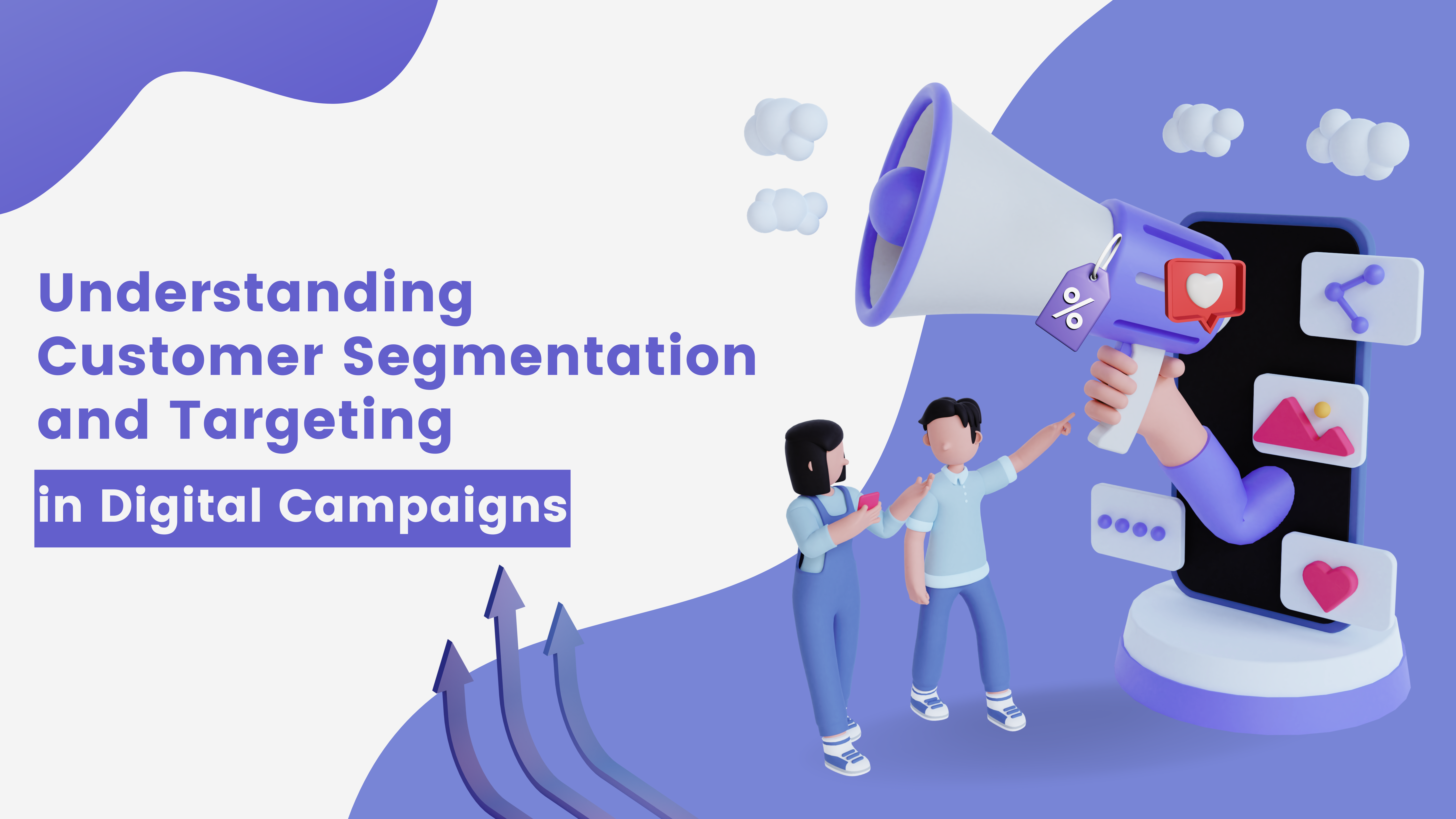Understanding Customer Segmentation and Targeting in Digital Campaigns

In the digital age, where consumers are bombarded with information every second, marketers need to find ways to cut through the noise and deliver content that resonates. One of the most effective ways to do this is through customer segmentation and targeting. These two core strategies allow businesses to create more personalized, relevant campaigns that engage their
audience, increase conversions, and foster brand loyalty.
What is Customer Segmentation?
Customer segmentation refers to the practice of dividing a large and diverse customer base into smaller, more manageable groups (or segments) based on shared characteristics. These segments help businesses understand the varying needs, preferences, and behaviors of different customer types. Segmenting your customers makes it easier to create tailored marketing messages that speak directly to their needs.
Key Types of Customer Segmentation :
Demographic Segmentation :
- Focuses on factors like age, gender, income, education, occupation, and family status.
- Example: A brand may target young professionals with high disposable income for premium products.
Geographic Segmentation :
- Divides customers by location—such as country, region, city, or climate.
- Example: A business selling snow gear may focus its marketing on customers in colder regions
Psychographic Segmentation :
- Categorizes customers based on their lifestyles, values, interests, attitudes, and behaviors.
- Example: A fitness brand may target individuals who prioritize wellness and an active lifestyle.
Behavioral Segmentation :
- Groups customers based on their purchasing habits, brand loyalty, product usage, or interaction with your brand.
- Example: A company may create campaigns for repeat buyers or offer discounts to customers who have abandoned their carts.
Technographic Segmentation :
- Based on the technology and devices customers use, particularly for businesses in the tech industry.
- Example: A software company may target individuals using specific operating systems or platforms.
Why is Customer Segmentation Important?
Segmentation is crucial because it helps businesses understand their audience and deliver highly targeted, relevant messages. Here’s why it matters:
- Increased Relevance: When you send messages tailored to the needs of a specific segment, customers are more likely to engage and respond positively.
- Optimized Marketing Efforts: By targeting the right people, you avoid wasting resources on those who are unlikely to be interested in your offerings.
- Better Product Development: Segmentation helps identify gaps in the market and allows businesses to tailor their products or services to meet the needs of specific segments.
- Customer Retention: Personalized marketing can improve customer satisfaction and loyalty, leading to longer-term relationships with customers.
What is Targeting?
Once you’ve segmented your customers, it’s time to decide which segments to target. Targeting involves selecting one or more of these segments and directing your marketing efforts toward them.
The key to successful targeting is selecting the right segments that align with your businessgoals and product offerings. Not all segments will be relevant for every product, so it’sessential to focus on those most likely to respond to your campaigns.
Common Targeting Strategies :
Undifferentiated Marketing :
- A strategy where the business treats the entire market as a homogeneous group, focusing on offering a single marketing message for all.
- Example: Coca-Cola’s “Open Happiness” campaign, which appeals to a broad audience.
Differentiated Marketing :
- Involves creating different messages or products for different market segments.
- Example: A car manufacturer offering different models for luxury buyers, budget-conscious families, and environmentally conscious customers.
Concentrated Marketing :
- This approach targets a single, well-defined segment, concentrating all marketing resources on it.
- Example: A niche online store specializing in eco-friendly pet products targeting environmentally conscious pet owners.
Micromarketing :
- A hyper-targeted approach where businesses market to individuals or small groups, often using highly personalized content.
- Example: Custom clothing brands that create products based on individual customer preferences.
Custom Marketing :
- Tailoring products, services, and marketing efforts to individual customers— often using data-driven insights to create a personalized experience.
The Role of Data in Segmentation and Targeting :
Data is the backbone of both customer segmentation and targeting. The more data you gather about your customers, the better you can understand their behavior, preferences, and pain points.
- Quantitative Data: This includes numerical data such as age, income, location, and online behavior, which can be used to categorize customers into various segments.
- Qualitative Data: This includes insights into customer attitudes, preferences, and perceptions, often collected through surveys, focus groups, or social media listening.
Digital tools like CRM systems, Google Analytics, social media insights, and email marketing platforms offer valuable data that can guide your segmentation and targeting strategies. Using these insights, businesses can continually refine their segmentation to ensure their marketing efforts remain relevant and effective.
Best Practices for Effective Segmentation and Targeting
Use Customer Personas :
Create detailed profiles of your ideal customers. These personas should include demographics, behaviors, challenges, goals, and purchasing habits. Personas help your marketing team focus on the most relevant segments and create content that speaks directly to them.
Embrace Dynamic Segmentation:
Customer needs and behaviors evolve, so segmentation shouldn’t be a one- time task. Regularly analyze and update your customer segments to ensure you’re targeting the right audience with the right offers.
Integrate Cross-Channel Marketing :
Once you have your segments and targeting strategies in place, ensure your messaging is consistent across all channels. Whether it’s email, social media, or your website, cross-channel consistency builds brand trust and improves engagement.
Leverage Automation :
Use automation tools to deliver personalized content at scale. For instance, email marketing platforms allow you to send tailored messages based on customer actions (like cart abandonment or past purchases)
Test and Optimize :
Always test different messages and strategies for each segment. A/B testing can help determine which approach is most effective, allowing you to continuously optimize your campaigns for better results.
Conclusion
Customer segmentation and targeting are integral parts of any successful digital marketing campaign. By understanding your audience’s behaviors, needs, and preferences, and creating tailored content for each segment, you can increase engagement, drive conversions, and foster stronger customer relationships. Whether you’re a small business or a large enterprise, mastering these strategies will help you navigate the complexities of the digital marketing landscape and deliver exceptional value to your customers.
Recent Posts
Why WordPress is Still the Best CMS for Bloggers in 2025 Blogging has come a long way since the early […]
Python vs. Other Programming Languages: What Makes It Stand Out? In the ever-growing world of programming languages, choosing the right […]
Visual Search in E-Commerce: Transforming How We Shop Online Introduction Imagine seeing a beautiful pair of sneakers on a stranger […]
How Full Stack Developers Can Improve Web Performance and Speed Web performance and speed are crucial factors in determining the […]





